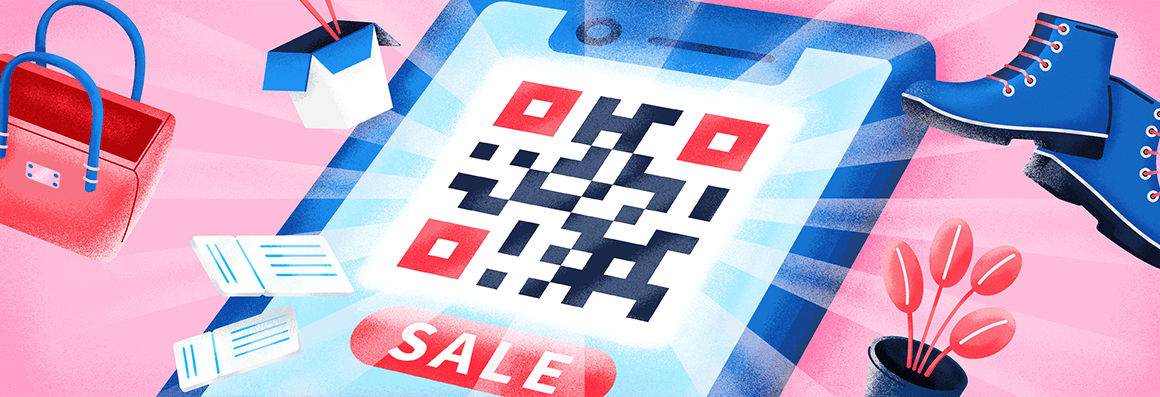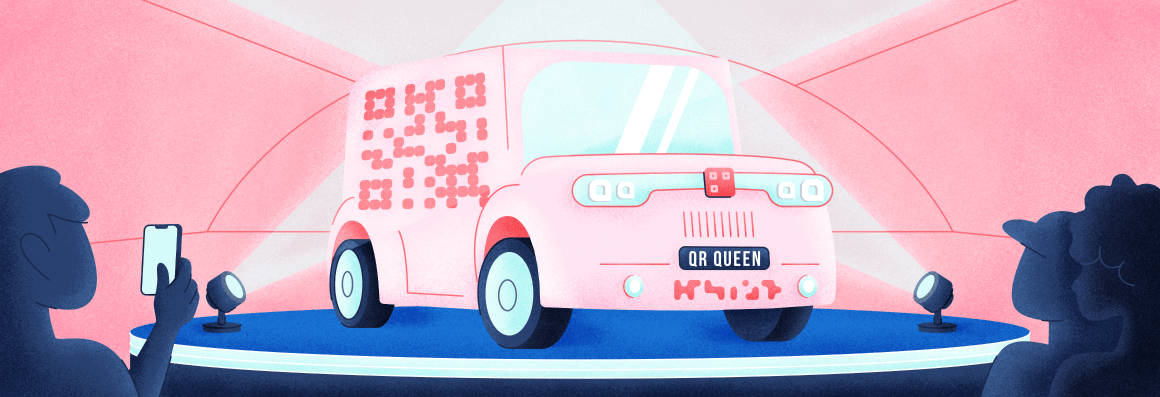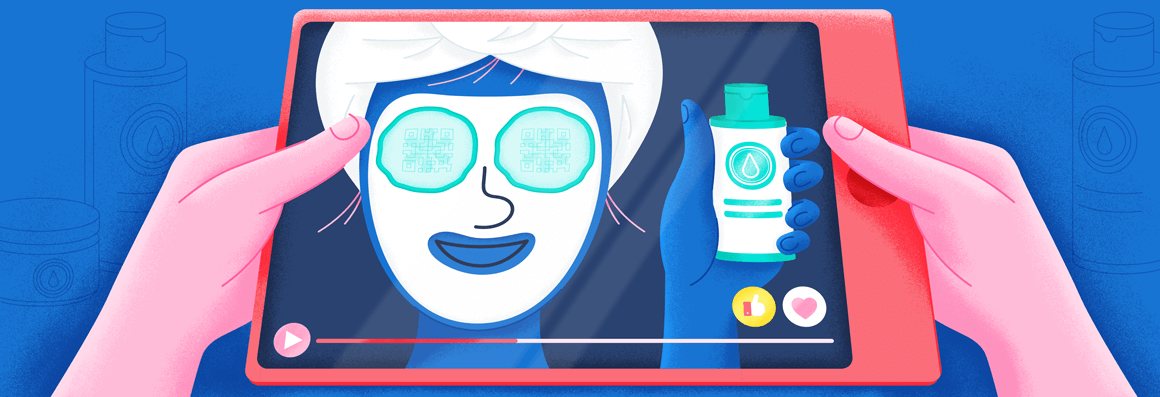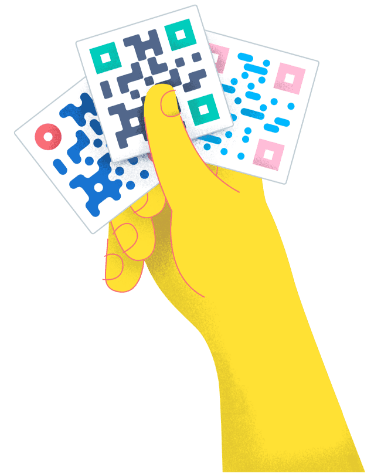- Best Practices ●
- COVID-19 ●
- Industry Trends ●
- Partners ●
- Product ●
5 Strategic Ways E-Commerce Brands Are Using QR Codes + Examples
E-commerce has revolutionized the way we shop: Now, you can easily buy just about anything online. However, with millions of e-commerce sites all vying for consumers’ attention, the industry is fiercely competitive.
This is one reason why e-commerce brands are turning to Quick Response Codes (QR Codes) to enhance customer experience and boost sales.
These small, square barcodes are everywhere, from consumer packaged goods to flyers and in-store displays. You can even use them to direct customers to your site, offer exclusive discounts or promotions, and collect customer feedback.
But it doesn’t stop there. Read on to learn five strategic ways e-commerce brands can use QR Codes—plus some examples of top brands using them to engage customers and create a seamless online shopping experience.
5 strategic ways to use QR Codes to boost revenue
E-commerce brands must continually innovate to capitalize on this lucrative market. QR Codes offer a cost-effective solution for brands looking to enhance their customer experience and drive sales. Here’s how QR Codes can work for your business.
1. Use QR Codes to offer exclusive discounts and promotions
Discounts and giveaways are excellent ways for e-commerce businesses to attract and retain customers. According to Capterra, 86% of online shoppers are more likely to purchase when there is an active discount or promotion—78% will cancel a purchase if they cannot find a deal.
You can use QR Codes to offer exclusive discounts and promotions, such as limited-time offers or personalized discounts for loyal customers. For instance, you could offer a discount to customers who scan a QR Code on your product packaging or in-store marketing materials.
When they scan the code using their smartphone, they’ll go to a landing page or checkout page with their personalized discount applied automatically. No more typing in long and complicated coupon codes at checkout—the convenience, speed, and personalization will enhance the customer experience and make them more likely to shop with you again.
2. Use QR Codes to provide product information and reviews
You can also use QR Codes on your product packaging to provide more detailed product information, such as ingredients, care instructions, and usage tips. This helps customers make informed purchase decisions without searching for this information online or digging through the packaging.
You also increase customer’s confidence and trust in your brand by providing transparent and easily accessible information. For instance, you could place QR Codes on your product pages that link to customer reviews or videos demonstrating how to use the product. You can also use the codes to direct customers to your social media pages, where they can find more user-generated content (UGC), insightful reviews, and engaging product videos.
3. Use QR Codes to drive traffic to your website or social media page
E-commerce stores rely heavily on website traffic to drive sales. To captivate potential customers and drive traffic to your site, it’s crucial to devise compelling marketing campaigns, both online and offline. QR Codes present a creative and cost-effective solution to boost brand awareness, attract visitors to your e-commerce website, and generate valuable leads.
Placing a QR Code on your business card or email signature, seamlessly linking to your webpage or social media profile, allows potential customers to dive deeper into your brand story and explore your exceptional products. QR Codes on flyers, brochures, and billboards can also direct customers to your online store, helping you reach a broader audience.
4. Use QR Codes to collect customer feedback
You must continually improve your products and services to understand your customers’ needs and keep up with their changing preferences. How do you achieve this? By collecting and analyzing customer feedback.
But there’s one huge problem—getting your customers to fill out lengthy surveys, especially on mobile devices, can be tricky.
QR Code surveys offer a simple solution by providing easy access to surveys and feedback forms without the hassle of typing in long URLs or navigating through your website. A QR Code on your website or shipping confirmation email that links to a customer survey can help you collect valuable customer feedback, which you can use to improve your brand’s products and services.
Salesforce’s State of the Connected Customer report finds that 91% of customers are likely to make another purchase after a positive customer experience. So, collecting and acting on feedback is crucial for retaining customers and driving revenue.
5. Use QR Codes to promote loyalty programs and referral programs
Lastly, you can use QR Codes to promote your loyalty and referral programs. These programs are a great way to incentivize repeat purchases and encourage customers to refer their friends and family to your brand, helping you expand your customer base.
By placing QR Codes on your packaging or in-store displays, you can direct customers via URL to your loyalty program sign-up page or a landing page with a special discount code. For instance, you could offer customers a discount on their next purchase for scanning a QR Code that refers a friend to your brand.
This encourages existing customers to make another purchase and attracts potential new customers who may have come across the code through their friends’ recommendations—a win-win for your e-commerce brand and customers.
Examples of brands using QR Codes
Online shopping and mobile commerce have skyrocketed post-pandemic, and e-commerce brands have quickly adapted and incorporated QR Codes into their marketing strategies. Let’s look at a few top brands using QR Codes to boost traffic and conversion rates.
Note: We discovered these brands through our online research.
Amazon
Amazon holds the highest market share of all e-commerce platforms, accounting for 37.6% of all online retail sales in the United States alone. The company’s net sales in 2022 hit over half a trillion dollars ($513.98 billion), with the U.S. branch alone generating over $356 billion.
Amazon uses QR codes on its product packaging to make it super easy for customers to reorder products or find more information online. When you scan the code, it takes you straight to the product page. From there, you can add it to your cart and complete your purchase hassle-free. This simplifies the buying process and encourages repeat purchases, contributing to Amazon’s massive success.
Nike
Nike is a $51.46 billion brand with a market cap of $162.94 billion. It’s synonymous with athletic footwear, apparel, and equipment, with a presence in over 170 countries. The brand uses QR Codes on its in-store displays, so customers can easily buy products straight from their phones or get more information about product features.
You can scan the code to access product reviews, ratings, and other details like color, size, and price. This interactive functionality eliminates the need for customers to ask store employees for help or wait in long checkout lines, making the shopping experience more convenient and efficient.
Sephora
Sephora, a French multinational personal care and beauty retailer, operates 2,700 stores in 35 countries and carries over 45,000 products from 340 curated brands. Sephora uses quick response codes on its product packaging to give customers access to tutorials and beauty tips.
Customers can scan the code to watch videos on how to apply makeup or style their hair using the product they purchased, giving them an immersive and informative shopping experience.
For example, a customer buying a lipstick can simply scan the code on the packaging to check out a tutorial on creating an ombre lip look or finding the perfect shade for their skin tone. This increases customer engagement, encourages customers to try new products, and boosts sales.
Starbucks
You might not think of coffee when you hear the term “e-commerce,” but Starbucks has been a pioneer in incorporating QR Codes into its business model. The coffee giant’s mobile app, which has over 31 million active users, uses QR Codes to allow customers to pay for their purchases in-store.
Customers can add money to their Starbucks account, scan the QR Code at the register, and complete their transaction without fumbling for cash or cards. This contactless payment method is fast, secure, and convenient for customers, increasing customer satisfaction and retention.
It also helps Starbucks collect valuable data on customer transactions, preferences, and behaviors, enabling them to personalize their marketing efforts and improve the customer experience.
Easily create QR Codes for your e-commerce brand with QR Code Generator
Incorporating QR Codes into your e-commerce business’s marketing strategy helps improve the customer experience, attract new customers, and increase conversions. Using QR Codes, you can easily promote your website, social media pages, loyalty and referral programs, and products.
QR Code Generator PRO is a simple and user-friendly tool that allows you to easily create QR Codes for your e-commerce brand. You can generate and customize Dynamic QR Codes for different use cases, add your brand’s logo or colors to make them more visually appealing, and track their performance with real-time analytics.
Sign up for QR Code Generator PRO to boost your e-commerce brand’s online and offline marketing efforts with versatile QR Codes.





